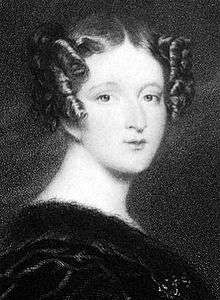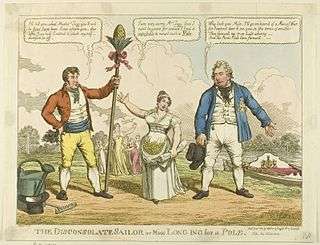Catherine Tylney-Long

Catherine Tylney-Long (1789 – 12 September 1825) was a 19th-century British heiress.
Life

She was the eldest daughter of Sir James Tylney-Long, 7th Baronet, of Draycot, Wiltshire. Her only brother James had inherited their father's fortune but died just short of his eleventh birthday in 1805, meaning that the vast estates gathered by the 7th Baronet in Essex, Hampshire, and Wiltshire and financial investments in hand worth £300,000 all devolved to Catherine. These estates were said to bring in total annual rents of £40,000 (over £2,000,000 at current values). She thus became known in fashionable London society as "The Wiltshire Heiress"[1] and was believed to be the richest commoner in England.[2]
Her suitors included the Duke of Clarence, later King William IV, keen to pay off his substantial debts. She eventually chose William Wesley-Pole, who on 14 January 1812 assumed the additional surnames of Tylney-Long, changing his name by Royal Licence. The couple married on 14 March 1812, but his extravagance meant the marriage was an unhappy one.
William gained an appointment as Gentleman Usher to George IV in 1822 (rendering him immune to arrest for debt) and left Britain to escape his creditors around 1823. Catherine implied in a letter to her sisters that her husband had given her a venereal disease and whilst on the continent he began a relationship with Helena Paterson Bligh (d. 7 April 1869), the wife of Captain Thomas Bligh of the Coldstream Guards, eventually abandoning Catherine entirely. Catherine died in 1825, leaving her children in the care of her two unmarried sisters, Dorothy and Emma. William had only had a life interest in Catherine's property, although he was responsible for the demolition of Wanstead House in 1825 to pay off some of his debts and also unsuccessfully tried to gain custody of their eldest child William, on whom Catherine's fortune had devolved.
References
Bibliography
- Geraldine Roberts, The Angel and the Cad (Macmillan: London, 2015)